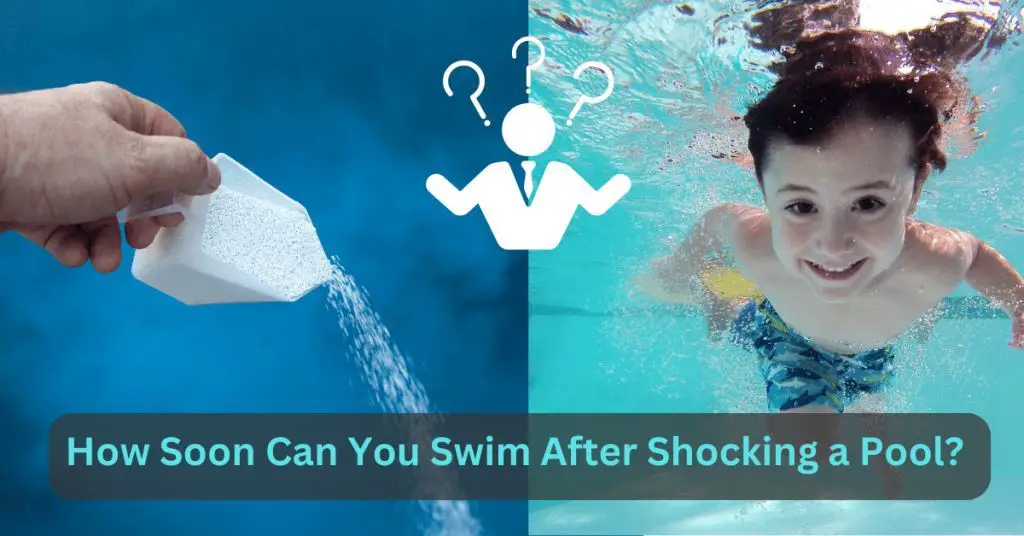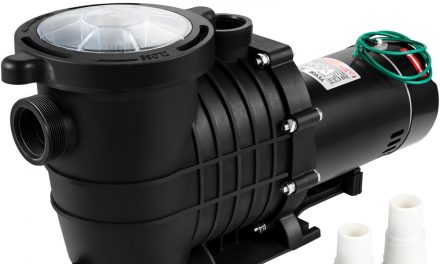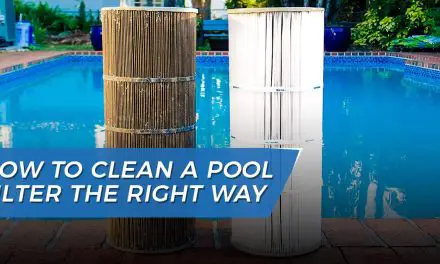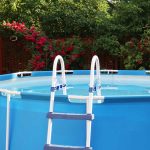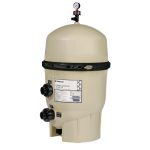You can swim in the pool after shocking it, but wait until the chlorine levels reach a safe range. Swimming pool shock treatment is an essential part of pool maintenance to keep the water clean and clear.
However, after this treatment, the question arises: how soon can you swim in the pool? While it may be tempting to jump right in, it’s crucial to ensure the chlorine levels are within a safe range for you to swim comfortably.
We will discuss the factors that influence the time it takes for the chlorine levels to stabilize after shocking a pool and provide you with some guidelines on when it is safe to take a dip. So, let’s delve deeper into this topic and find out when you can safely return to swimming in your pool after shocking it.
The Importance Of Pool Shocking:
The importance of pool shocking cannot be overstated. It is necessary for maintaining a clean pool. Pool shocking helps to eliminate bacteria, algae, and other pollutants that can accumulate in the water. By regularly shocking your pool, you ensure that it remains safe and hygienic for swimming.
But how soon can you swim after shocking a pool? The answer depends on the type of pool shock you use. Some shocks require waiting just a few hours, while others may require waiting overnight. It is important to carefully read the instructions on the pool shock product to know the recommended waiting time before swimming.
Remember, allowing enough time for the shock to dissipate will ensure a safe and enjoyable swimming experience for everyone.
How Pool Shocking Works:
Pool shocking is a necessary step in pool maintenance. This process involves adding a high concentration of chlorine to the pool water in order to eliminate harmful bacteria and algae. When chlorine comes into contact with water, it forms hypochlorous acid, a powerful disinfectant.
This acid attacks the cell walls of bacteria and algae, ultimately killing them. The length of time you should wait before swimming after shocking a pool depends on the type of chlorine used and the levels of chlorine present in the water.
In general, it is recommended to wait for at least 24-48 hours to allow the chlorine levels to return to a safe range for swimming. It is important to test the water regularly to ensure the appropriate chlorine levels are maintained for a safe swimming environment.
Understanding the science behind pool shocking and the role of chlorine can help you make informed decisions about pool maintenance.
Factors To Consider Before Swimming:
Factors to consider before swimming in a pool that has been shocked include the waiting period and testing the water’s chlorine levels. It is important to wait for a certain amount of time after shocking a pool to allow the chemicals to properly circulate and dissolve.
This waiting period ensures that the chlorine levels are balanced and safe for swimmers. To determine if it is safe to enter the pool, you should regularly test the water’s chlorine levels. This can be done using a pool testing kit, which measures the chlorine concentration.
It is important to wait for the chlorine levels to reach within the recommended range before swimming to avoid any potential skin or eye irritation due to excessive chlorine. By following these guidelines, you can ensure a safe and enjoyable swimming experience after shocking a pool.
Determining When It’s Safe To Swim:
Determining when it’s safe to swim after shocking a pool involves testing the water’s chlorine levels. Balancing the chlorine concentration is crucial for ensuring a safe swimming environment. To do this, follow these guidelines. Firstly, it’s important to regularly test the water using a reliable pool testing kit.
This will help determine the current levels of free chlorine. Secondly, wait until the free chlorine level drops to a safe range, which is typically between 1 and 3 parts per million (ppm). This ensures that the chlorine has sufficiently dissipated and won’t cause any irritation or harm to swimmers.
Additionally, keep in mind that factors such as pool size and shock treatment quantity can affect the time it takes for chlorine levels to normalize. Therefore, testing the water is vital before diving in to guarantee a safe and enjoyable swimming experience.
Quick Tips For Safe Swimming After Pool Shocking:
Swimming after shocking a pool requires following proper pool maintenance and testing techniques. Here are some quick tips to ensure safe swimming. Firstly, it’s essential to wait for the appropriate time period before taking a dip. This duration can vary depending on the pool shock product used, so it’s crucial to read the instructions carefully.
Secondly, test the water regularly to ensure optimal balance of chemicals. This will help maintain a safe and clean swimming environment. Additionally, it’s advisable to use protective measures such as wearing goggles or swim caps to avoid any discomfort. Moreover, showering before and after swimming can help prevent skin irritation.
Lastly, keeping children and pets away from the pool during the shocking process is crucial for their safety. By following these guidelines, you can safely enjoy swimming after pool shocking.
Alleviating Common Concerns:
After shocking a pool, many people have concerns about when they can safely swim. One common fear is chlorine irritation. People worry that swimming too soon after shocking a pool will lead to skin, eye, or respiratory issues. However, these concerns are often based on misconceptions.
The truth is, shocking a pool is a routine and necessary maintenance task that ensures proper sanitization. Once the pool water’s chlorine levels have returned to normal, usually within 24 to 48 hours, it is safe to swim. In fact, shock treatment can even improve water clarity and reduce bacteria and other contaminants.
So, there is no need to worry about chlorine irritation or any other health risks associated with swimming after pool shocking. Trust the science and enjoy your swim!
Proper Pool Shocking Techniques:
After shocking a pool, it’s essential to know when it’s safe to swim again. Proper pool shocking techniques are crucial in ensuring a clean and hygienic swimming environment. Following the manufacturer’s guidelines is of utmost importance to guarantee optimal results.
Let’s go through the step-by-step instructions for pool shocking. Firstly, test the water for pH and chlorine levels. Next, add the appropriate amount of shock treatment based on the pool’s capacity. Dissolve the shock treatment in a bucket of water before pouring it into the pool.
Ensure the pool’s circulation system is running for at least 24 hours to fully disperse the shock treatment. Finally, retest the water before allowing anyone to swim. Remember, swimming before it’s safe can lead to eye and skin irritation and can compromise the effectiveness of the shock treatment.
Always prioritize safety and follow the proper pool shocking techniques for a clean and enjoyable swimming experience.
Maintaining A Clean And Healthy Pool:
Maintaining a clean and healthy pool is essential for long-term benefits and proper pool hygiene. Regular maintenance tips can help you avoid having to shock your pool frequently. By keeping the pool water balanced, regularly skimming the surface, and cleaning the filters, you can prevent the need for excessive shock treatments.
Additionally, brushing the pool walls and vacuuming the pool floor on a routine basis will help remove any debris and bacteria. It is also important to regularly check and adjust the chlorine and pH levels of the water to ensure it remains safe and sanitary.
By following these maintenance guidelines, you can enjoy swimming in a crystal-clear and healthy pool without having to shock it as often.
Frequently Asked Questions For How Soon Can You Swim After Shocking A Pool?
How Soon Can You Swim After Shocking A Pool?
You can generally swim in a shocked pool within 24-48 hours, but it’s recommended to follow package instructions.
Can You Swim In A Shocked Pool The Same Day?
It’s not recommended to swim in a shocked pool on the same day to allow the chemicals to distribute properly.
How Long Should You Wait To Swim After Shocking A Pool?
To ensure safety and maximize effectiveness, it’s best to wait 24-48 hours before swimming in a shocked pool.
Conclusion
After shocking a pool, it’s crucial to wait for the chlorine levels to return to safe levels before swimming. This process typically takes between 8-24 hours, depending on the initial condition of the pool and the shock treatment used. It’s important to remember that shock treatments can temporarily increase the concentration of chlorine in the water to levels that are unsafe for swimming.
Waiting for the chlorine levels to balance ensures the safety of swimmers and prevents any potential skin or eye irritation. While it may be tempting to jump in the pool right after shocking it, it’s better to be patient and allow the chemicals to do their job.
By following this guideline, you can ensure a clean and safe swimming environment for you and your loved ones. So, be patient and let the pool water get back to its optimal condition before taking a refreshing dip!

